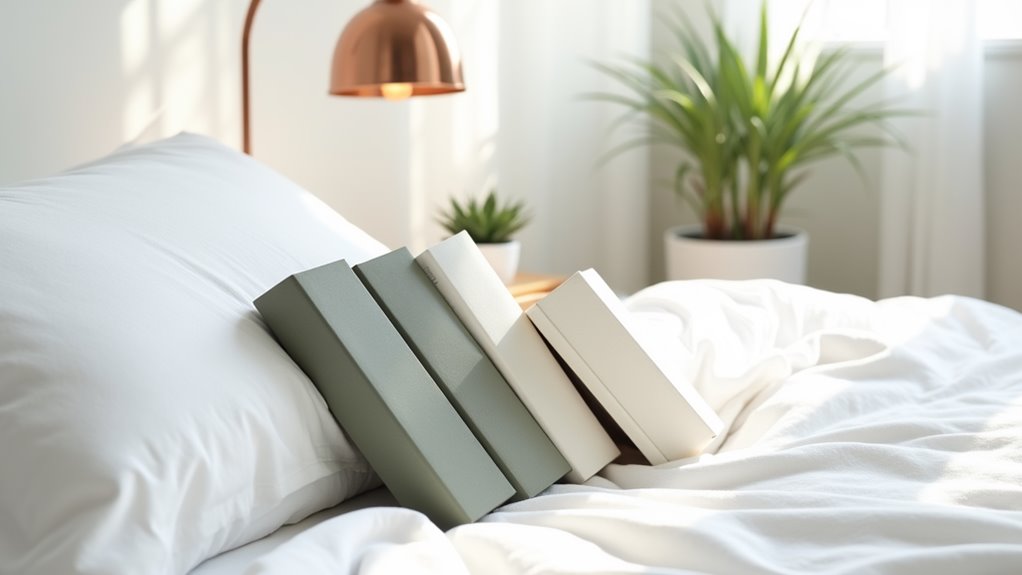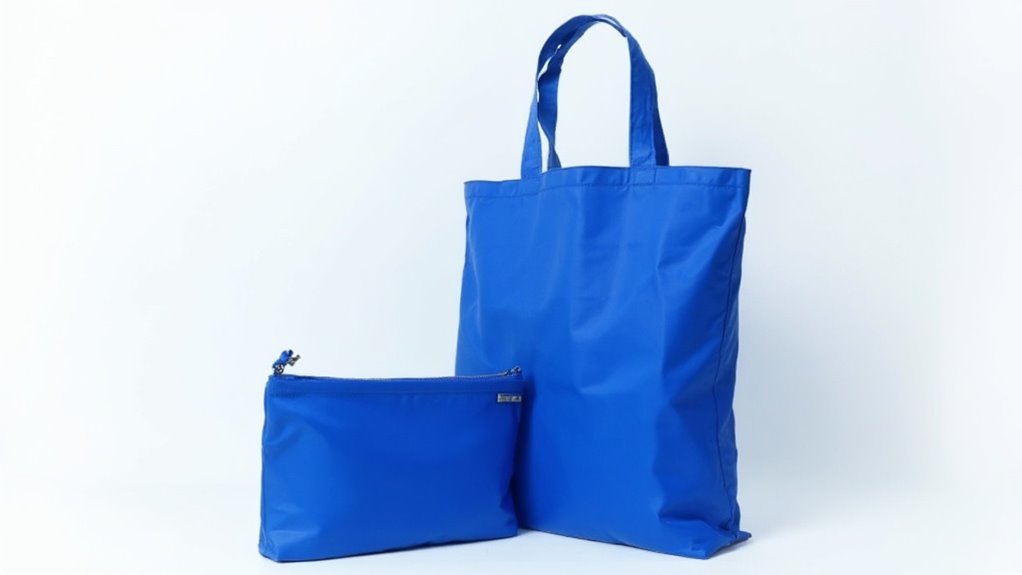Table of Contents Show
There may be products. Products are independently selected by our editors. We may earn an affiliate commission from the links with no charge to you, example: as Amazon Affiliate.
Disclaimer: We may earn an affiliate commission from the links with no charge to you.
We’ve curated the top 5 minimalist lifestyle books to kickstart your decluttering journey in 2025. Shira Gill’s “LifeStyled” offers sustainable systems with elegant visuals, while “The Art of Living Small” delivers practical storage solutions. “Get Rid of the Mess” tackles emotional barriers, “The Naked House” makes minimalism approachable, and “Minimalist Home Secrets” provides step-by-step guidance. Each book brings unique strengths to help you transform your space and mindset.
Key Takeaways
- “LifeStyled” offers the most comprehensive approach, combining aesthetic inspiration with practical systems for sustainable organization and intentional living.
- “Get Rid of the Mess” excels in addressing emotional barriers to decluttering while providing room-by-room guidance and evidence-based methods.
- “The Naked House” presents minimalism in an approachable way through five clear principles, making it ideal for beginners.
- “The Art of Living Small” specializes in practical storage solutions and mindful downsizing techniques for maximizing limited space.
- “Minimalist Home Secrets” breaks down decluttering into manageable steps using the 90/90 rule and personal stories for emotional support.
LifeStyled: Your Guide to a More Organized & Intentional Life
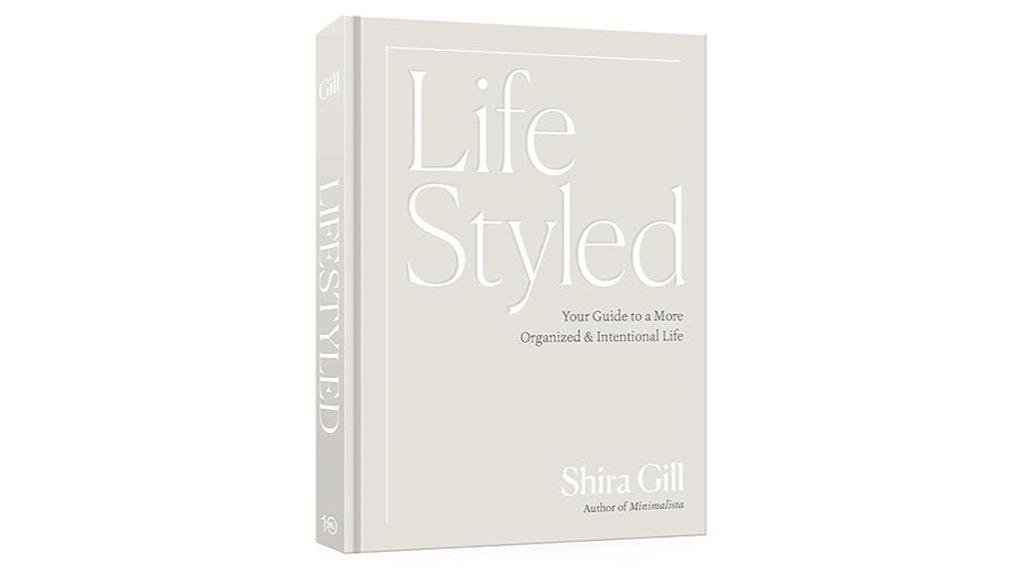
If you’re seeking a fresh perspective on organizing your life with style and intention, LifeStyled by Shira Gill stands out as an essential guide. This beautifully designed book combines elegant photography with clear, witty writing to make complex organizing principles accessible.
We love how Gill’s approach focuses on creating sustainable systems rather than quick fixes. She offers adaptable strategies for every life area—from health to finances—that work whether you’re a busy parent or career professional. Her personal anecdotes and actionable steps make the journey to minimalism feel manageable, while promoting a mindset shift toward purposeful living.
Best For: Anyone seeking to create a more organized, intentional lifestyle through practical systems and mindset shifts, particularly those who appreciate aesthetic presentation and actionable advice.
Pros:
- Beautiful design and photography that makes the book both practical and visually inspiring
- Clear, relatable writing style with personal anecdotes that make complex organizing principles accessible
- Adaptable strategies that work for different life stages and situations
Cons:
- May feel too lifestyle-focused for those seeking purely practical organizing advice
- Some strategies might require significant time investment to implement fully
- Aesthetic emphasis could make solutions seem aspirational rather than practical for some readers
The Art of Living Small: Minimalist Design & Storage Guide
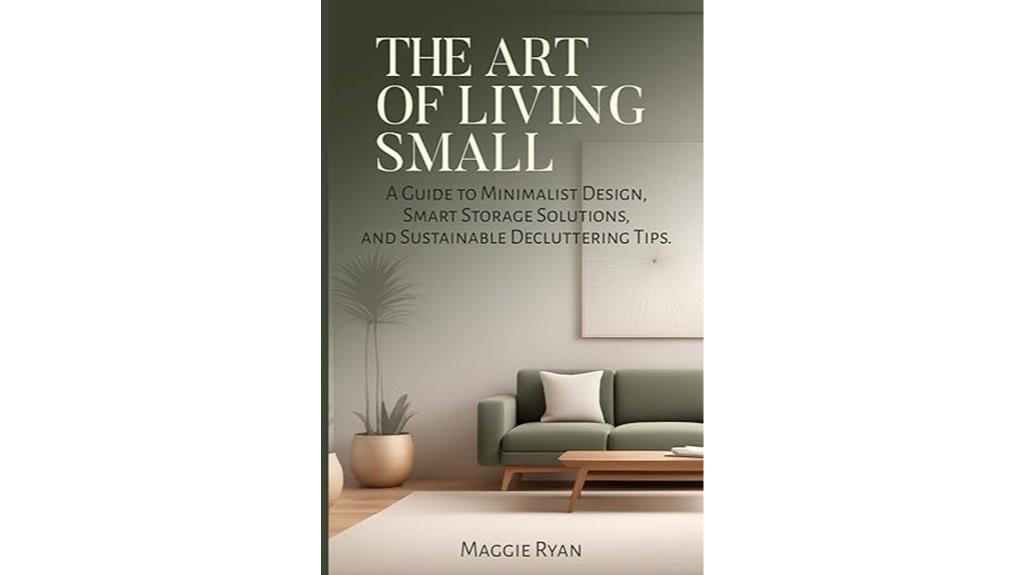
Anyone feeling overwhelmed by clutter and yearning for a simpler lifestyle will find “The Art of Living Small” by Maggie Ryan an invaluable resource. This transformative guide combines practical storage solutions with mindful approaches to downsizing.
We love how Ryan tackles both the physical and emotional aspects of decluttering, helping readers navigate the challenging process of letting go. While the Kindle version lacks illustrations, the book’s actionable strategies for maximizing space and creating sustainable, stylish sanctuaries make it a must-read.
Whether you’re preparing for a major life shift or simply seeking more intentional living, Ryan’s expert guidance will help you embrace the possibilities of minimalist design.
Best For: People seeking to downsize their living spaces, declutter their homes, or transition to a minimalist lifestyle while maintaining style and functionality.
Pros:
- Comprehensive coverage of both practical and emotional aspects of decluttering
- Actionable strategies for maximizing space and storage solutions
- Clear guidance for developing sustainable, mindful living habits
Cons:
- Kindle version lacks illustrations
- Limited visual examples of storage solutions
- May feel overwhelming for readers seeking quick-fix solutions
Get Rid of the Mess: Decluttering What You Don’t Need
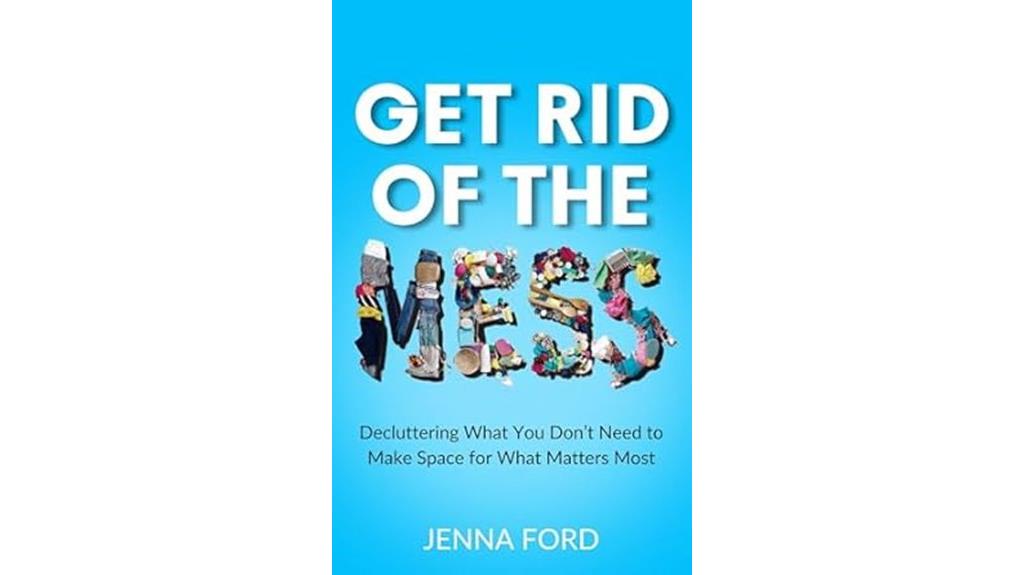
Struggling with cluttered spaces and the emotional weight of excess possessions? “Get Rid of the Mess: Decluttering What You Don’t Need” offers a unique blend of psychological insight and practical strategies for readers ready to transform their living spaces.
We love how this book tackles decluttering from both emotional and practical angles. You’ll find room-by-room strategies, helpful worksheets, and research-backed techniques to sort through your belongings. What sets this guide apart is its compassionate approach to addressing the psychological barriers that keep us holding onto items we don’t need.
The book’s maintenance strategies guarantee your efforts last, while its structured approach helps you see immediate results. We’re particularly impressed by its evidence-based methods and relatable advice.
Best For: People who struggle with both the emotional and practical aspects of decluttering and need a comprehensive, compassionate guide to transform their living spaces.
Pros:
- Combines psychological insights with practical decluttering strategies
- Includes helpful worksheets, charts, and room-by-room guidance
- Takes a non-judgmental, understanding approach to addressing clutter issues
Cons:
- Some readers may find the format too lengthy
- Could be overwhelming for those seeking quick fixes
- May contain more psychological analysis than some readers want
The Naked House: Five Principles for a Minimalist Home
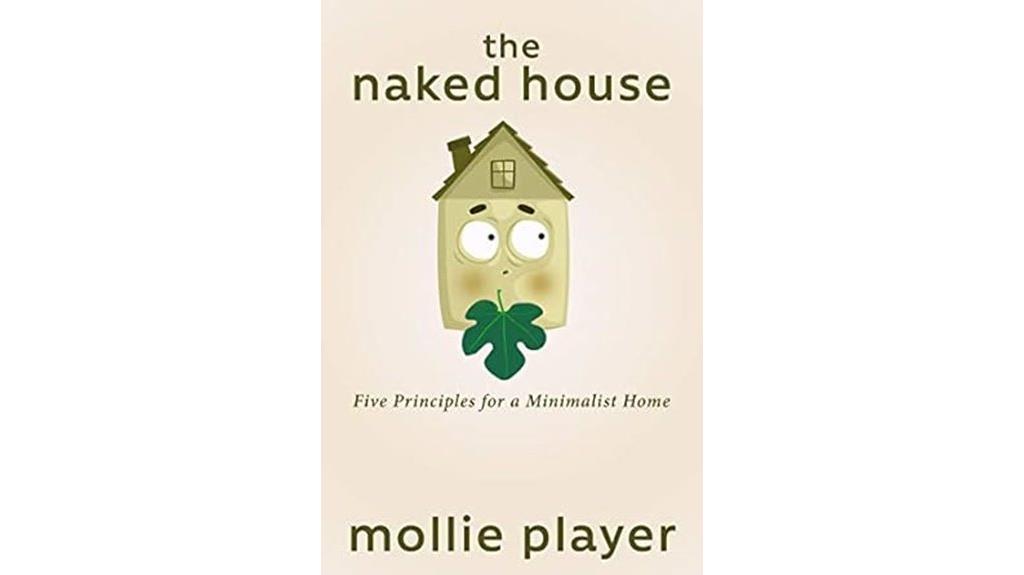
The Naked House stands out as an ideal starting point for readers seeking a simplified home environment. The book’s principles guide us through personal transformation while offering practical advice for achieving a minimalist aesthetic.
While we appreciate the author’s conversational style and actionable tips like matching storage solutions, it is crucial to recognize that some suggestions may not work for everyone. The book’s American-centric perspective might not translate globally, especially for those in urban settings or different economic situations.
Despite mixed reviews about its approach to minimalism, we’ve found this book valuable for readers ready to explore decluttering with an open mind.
Best For: Readers beginning their minimalism journey who want a straightforward, accessible guide to decluttering and simplifying their living spaces.
Pros:
- Clear, conversational writing style makes complex minimalism concepts approachable
- Provides practical storage and organization solutions
- Offers real-world examples of successful minimalist transformations
Cons:
- American-centric perspective may not resonate with global audiences
- Some suggestions, like garage storage, aren’t feasible for many living situations
- Approach to minimalism may feel extreme or sterile to some readers
Minimalist Home Secrets: Guide to Declutter and Organize
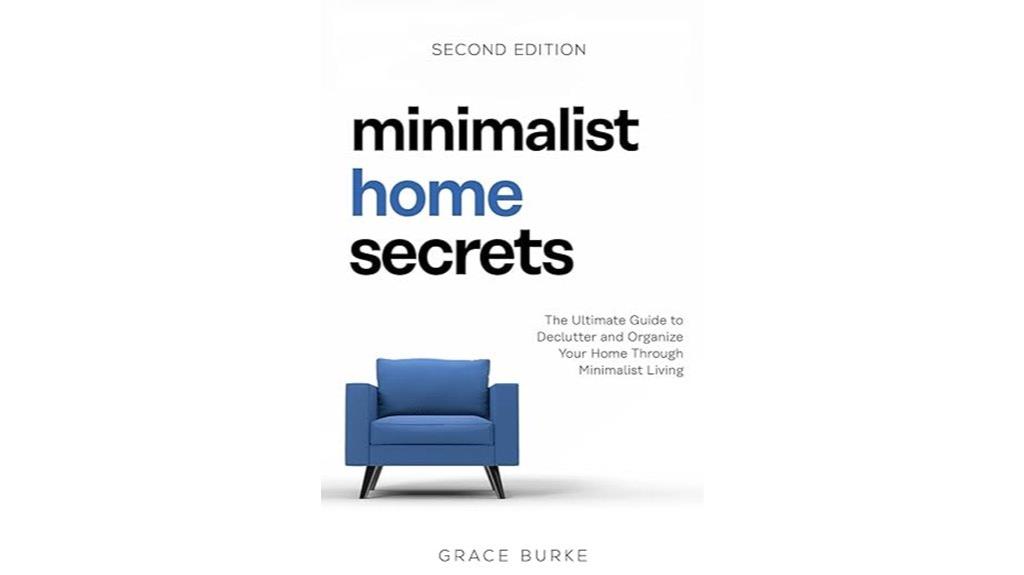
Modern homes often overflow with unnecessary possessions, making “Minimalist Home Secrets” an invaluable guide for readers seeking practical decluttering solutions. We love how this book breaks down minimalism into manageable steps, offering room-by-room guidance that won’t overwhelm you.
The author’s personal stories and emphasis on emotional well-being set this book apart. Through methods like the 90/90 rule and thoughtful decision-making questions, we’ll help you transform your space. Beyond just organizing, you’ll learn how minimalism creates mental clarity and intentional living. It’s not about getting rid of everything – it’s about curating a home that truly reflects your values.
Best For: Anyone feeling overwhelmed by clutter who wants a practical, step-by-step approach to minimalism while addressing the emotional aspects of decluttering.
Pros:
- Provides room-by-room guidance with manageable, bite-sized steps
- Includes personal anecdotes and addresses emotional attachments to possessions
- Features specific strategies like the 90/90 rule and practical decision-making questions
Cons:
- May be too basic for those already familiar with minimalism concepts
- Some readers might find the emotional focus less helpful than pure organizational tactics
- Does not provide specific storage solutions or product recommendations
Factors to Consider When Choosing 5 Minimalist Lifestyle Books for a Clutter-Free January
When we’re hunting for the perfect minimalist lifestyle books to start our clutter-free January journey, we’ll need to evaluate several critical factors that make a book truly valuable. We’ll focus on the writing style’s accessibility, practical action steps we can implement immediately, and visual elements that enhance our learning experience. Additionally, we’ll consider both the author’s demonstrated expertise and whether the book’s approach aligns with our demographic needs as readers.
Writing Style and Accessibility
Since choosing the right minimalist lifestyle book can greatly impact your decluttering journey, writing style and accessibility play crucial roles in determining its effectiveness. We recommend looking for books that combine clear, engaging language with relatable personal stories, making complex decluttering concepts easy to understand and implement.
The best minimalist lifestyle books strike a balance between warmth and practicality, offering structured guidance without overwhelming readers. When we evaluate these books, we prioritize those that break down minimalist principles into actionable steps you can follow at your own pace. Look for authors who write conversationally, sharing real-world examples while maintaining a supportive tone. Whether you’re a beginner or already familiar with minimalism, the writing should feel approachable and inspire you to take meaningful action toward your decluttering goals.
Practical Action Steps
Making the right choice among minimalist lifestyle books requires careful consideration of their practical applications and actionable guidance. We recommend looking for books that break down decluttering into manageable, step-by-step processes with clear room-by-room strategies. The most effective guides provide concrete action plans rather than vague suggestions.
Let’s prioritize books offering specific measurement tools, checklists, and decision-making frameworks that align with your lifestyle. We’ve found that the best resources combine immediate action steps with sustainable maintenance strategies. They should address both the physical aspects of decluttering and the emotional challenges that often arise. Look for books that include real-world examples and case studies from readers who’ve successfully implemented the author’s methods, as these validate the effectiveness of the suggested approaches.
Visual Design Elements
The visual design elements of minimalist lifestyle books serve as powerful teaching tools that reinforce their core messages. When we’re selecting books to guide our decluttering journey, we’ll want to look for clean layouts with plenty of white space that let the content breathe and help us focus on key concepts.
We should prioritize books featuring high-quality photography and illustrations that inspire us to envision our own clutter-free spaces. Look for neutral color schemes that create a sense of calm, along with clear infographics and charts that break down complex organization methods. Consistent design elements, from typography to section markers, make the content more accessible and enjoyable. These thoughtful visual components aren’t just aesthetically pleasing—they’re essential in helping us absorb and implement minimalist principles effectively.
Author’s Expertise Level
When selecting minimalist lifestyle books to guide our January decluttering journey, an author’s expertise level serves as a crucial indicator of the book’s potential value. We’ll want to look for writers who’ve personally embraced minimalism and can share authentic experiences alongside their professional insights.
The most credible authors typically combine hands-on experience with formal training in organizational psychology, interior design, or professional organizing. We should prioritize books by writers who’ve conducted workshops, provided coaching services, or published multiple works on decluttering and minimalism. Their educational background and certifications matter too, but don’t overlook the power of reader testimonials. When authors consistently receive positive feedback about their practical strategies and engaging writing style, it’s often a sign they’ll effectively guide us through our own decluttering process.
Target Reader Demographics
Selecting minimalist lifestyle books requires careful consideration of diverse reader demographics and their unique decluttering needs. We’ve found that the most effective books cater to busy professionals, parents, and individuals maneuvering life changes who seek practical, actionable guidance for their minimalist journey.
When we recommend books, we look for those that address the emotional challenges of letting go, particularly for readers who struggle with attachment to possessions. We also prioritize works that speak to environmentally conscious individuals looking to align their minimalist practices with sustainable living. The best minimalist guides feature relatable stories and approachable writing styles, making complex lifestyle changes feel manageable for readers at various life stages and experience levels.
Space-Saving Storage Solutions
Smart storage solutions serve as a key factor in our book recommendations for minimalist living. We’ve selected books that emphasize multifunctional furniture ideas, like ottomans with hidden compartments and beds with built-in storage. These practical guides showcase vertical storage techniques, including wall-mounted shelves and over-door organizers, which help maximize your living space.
We’ve prioritized books that teach clear organization systems using labeled containers and transparent bins, making it easier to track your belongings. Look for guides that highlight often-overlooked spaces, such as under-bed storage and closet optimization techniques. The best minimalist lifestyle books also incorporate design principles that create the illusion of larger spaces through open shelving and cohesive color schemes, helping you transform your home into a serene, clutter-free environment.
Emotional Support Approach
Mindfulness forms the cornerstone of our recommended minimalist lifestyle books, as emotional support plays an essential role in achieving lasting decluttering success. We’ve carefully selected books that address the psychological aspects of letting go, helping you understand your attachments to belongings while providing empathetic guidance through the decluttering process.
Instead of focusing solely on the physical act of organizing, we look for authors who create a judgment-free space where you can explore your emotional barriers to minimalism. The best books acknowledge your fears and feelings of overwhelm while offering practical solutions. They’ll help you recognize how a clutter-free environment can enhance your mental well-being, making the journey feel less intimidating and more transformative. These thoughtfully chosen resources emphasize self-reflection and personal growth throughout your minimalist journey.
Frequently Asked Questions
How Long Does It Typically Take to See Results From Minimalist Living?
We can start seeing initial results from minimalist living within 2-4 weeks as we declutter our spaces and simplify our routines. However, experiencing deeper benefits like reduced stress, better focus, and financial savings typically takes 3-6 months of consistent practice. Remember, it’s not a race – we’re creating lasting lifestyle changes. Some of us notice mental clarity improvements in just days, while larger transformations unfold gradually.
What Should I Do With Sentimental Items I Can’t Bear Throwing Away?
When cherished treasures pull at our heartstrings, we don’t need to part with everything. Let’s create a special “memory box” for those irreplaceable items that tell our story. We can photograph some pieces to preserve their essence digitally, while displaying truly meaningful objects as intentional decor. If we’re still uncertain, we’ll try the six-month box method – storing items away and revisiting them later to gauge their emotional impact.
Can Minimalism Work for Families With Young Children and Pets?
Yes, we can absolutely practice minimalism with kids and pets! We’ll just need to be more flexible and realistic in our approach. Let’s focus on maintaining fewer but better-quality toys, rotating playthings seasonally, and creating smart storage solutions. For pets, we can keep essentials organized in dedicated zones. Remember, minimalism isn’t about deprivation – it’s about intentionally choosing what serves our family’s needs while reducing unnecessary clutter.
How Do I Convince Resistant Family Members to Embrace Minimalist Living?
We can’t force minimalism on resistant family members – it must be their choice. Instead, let’s lead by example and show them the benefits: more time together, less cleaning, and reduced stress. Start small by decluttering our own spaces, share positive experiences, and respect their pace. When they notice how much lighter and happier we feel, they’ll likely become curious about our minimalist journey.
What Are the Psychological Benefits of Adopting a Minimalist Lifestyle?
Picture a cluttered room versus a clean, open space – our minds often mirror our environment. When we embrace minimalism, we experience reduced anxiety and mental fatigue since we’re not constantly processing visual chaos. We’ll find improved focus, clearer decision-making, and enhanced creativity as our minds aren’t weighed down by excess stuff. Let’s free ourselves from the mental burden of overconsumption and discover a sense of peace through intentional living.
Conclusion
We’ve explored these transformative books that’ll guide you toward a simpler, more intentional life in 2025. Like a butterfly emerging from its chrysalis, you’ll shed the excess and discover the beauty of living with less. Whether you’re taking baby steps or diving headfirst into minimalism, these carefully curated reads will equip you with the tools, mindset, and motivation to create your clutter-free sanctuary.
